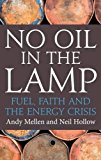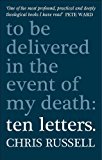 I’ve recently read an incredibly eye-opening book about the energy crisis and its impact on everyday life: No Oil in the Lamp. I met the publisher of this book at a conference lately and asked to interview him on the impact of the energy crisis on publishing. This is what he had to say …
I’ve recently read an incredibly eye-opening book about the energy crisis and its impact on everyday life: No Oil in the Lamp. I met the publisher of this book at a conference lately and asked to interview him on the impact of the energy crisis on publishing. This is what he had to say …
1. Could you briefly summarise the premise of No Oil in the Lamp and why you decided to publish it?
No Oil in the Lamp addresses the issue of Peak Oil. Essentially Peak Oil is the term given to a point in time when the earth’s known oil resources will begin to start to run out. We decided to publish Andy and Neil’s book because we share their view that we need to think seriously about our energy consumption and the nature of our day to day living in the light of impending energy shortages.
2. What did the authors do right in their approach to you?
We have a very open submissions policy at DLT, and accept and read plenty of unsolicited manuscripts – i.e. from those authors without an agent. Andy and Neil put a strong case for the importance of their book, and found an editor (me) who believed the issue needs to be more widely addressed in print, read about and understood.
3. The predicted depletion of unrenewable energy over the next 30 years will have a profound impact on us all. What particular challenges will it present to the publishing industry?
The publishing industry is already beginning to gravitate towards electronic media to create and provide content for readers. This is largely in reponse to the new technologies available as opposed to a concern about an energy constrained future. While electronic publishing improves the publishing industry’s carbon footprint, and will mean less energy is used in the future to warehouse and deliver content to bookstores and readers, it’s difficult to say how much declining oil reserves will impact on the manufacture of electronic devices to support an electronic system of publishing. The electricity will have to come from somewhere, not to mention the various plastics used which are today largely made of oil. As for print books, I hope they will continue to survive alongside electronic books, and I believe reading habits won’t change as fast as some people believe or hope (if indeed you are one of the people that has invested a lot in eBooks), but evidently the manufacture of pr int books and the energy used in sustaining their life may be greater.
4. In No Oil in the Lamp the authors play prophet and look forward to the year 2030. They give three scenarios of what the world might look like if the world’s governments respond in particular ways to the energy crisis. These range from optimistic to apocalypic. Could you do the same thing for the publishing industry?
Not with any great certainty. If the contention is that energy constraints will make things more difficult in the publishing industry then the answer is perhaps, but not on an apocalyptic scale. If the contention is that the newer forms of technologies that enable a great deal of self-publishing, and free information sharing will undermine the content being produced and sold by publishers, again, I believe publishers can and will still be able to offer expertise a self-publisher often doesn’t have recourse to (editorial skills, marketing, sales and distribution). If, I’m wrong I’ve always got my golf handicap to work on.
5. How will DLT specfically adapt?
DLT has the advantage of being small, and therefore being flexible. We will make sure we keep abreast of the changes in the publishing industry and continue to evaluate the changing climate beyond.
6. Over the last five years a major talking point in the publishing industry is whether or not e-books will replace print books as the main way of consuming books. What is your view on this?
As aforementioned I do believe electronic books will catch up with print books in terms of numbers being produced and sold; it stands to reason when so much is being invested in their development by the industry leaders, not to mention in the technologies that enable the eReader and increasingly complex forms of audio and visual display. However, I don’t see the tactile value of a print book, as well as the romance – the giving and receiving of a print book as a gift – as being lost. It’s perhaps too simple to say, my parents were brought up during the advent of television and they still prefer listening to the radio and so on, but people won’t lose their nostalgia, appreciation of aesthetics or a desire to engage all the five senses any time soon. Then again, as a publisher needing to make money, eBooks offer another revenue stream, and a potentially lucrative one so they are worth concentrating on.
7. Authors are very concerned that with e-books selling so cheaply, they will simply not be able to make a living out of writing. Do you think these fears are justified?
I think perhaps they are. I suppose a parallel is in the record industry where songwriters have to embark on exhaustive eighteen month tours to make up for mediocre record sales. Then again if an author has a following and is able to produce something worthwhile and a publisher is able to market the book in the right manner to the right groups, people will want it even if the price is higher (but not too much higher!) than normal, I feel. As an editor I don’t feel too comfortable with having a list of books dictated by the sales and marketing department, because there would be a danger of a publisher providing uniform content, and I don’t believe this is a publisher’s raison d’etre, rather it is to provide a good balance and range, still marketing books and publicising them in difficult market conditions is hugely important, and will become increasingly so I would imagine.
8. Looking beyond the simple preference of readers, what are some of the environmental issues in the e-book versus print book debate? For instance, looking at the big picture, do e-books pose a greater recycling challenge than print books? What percentage of print books are printed on paper from sustainable forests, for instance?
This is ground that has been well trodden in recent years, but for good reason. Publishers like any business have an ethical responsibility, especially when our products are made from trees (although this amounts to something like less than 1% of the world’s timber). I touched on this earlier, and publishers are increasingly looking to print books on paper from sustainable forests or even recycled paper; with regard to a percentage, I’m afraid I don’t know: it will still be fairly small I would think.
9. Any final points?
If you’re a writer with an interesting agenda with a secular or faith background, do get in touch with Darton Longman and Todd. And, meanwhile, consider walking or cycling to work (you’re saving energy, if not your own, the planet’s)!
Will Parkes is a Commissioning Editor at DLT Books, publishers of non-fiction, including religion and spirituality, based in South London. Will works with a variety of authors from a range of faith backgrounds to create books which provide sustenance for the heart, mind and soul. No Oil in the Lamp with Andy Mellen and Neil Hollow is DLT’s first book on Peak Oil, and the implications of an energy constrained future. For more information on the book and the issues surrounding it visit the No Oil in the Lamp website. You can also link up with the authors on their Facebook page.
 This week’s guest post is from poet Paul Canon Harris who has recently hit the performance poetry circuit. So pour yourself a drink, find yourself a seat, and let’s get on with the show …
This week’s guest post is from poet Paul Canon Harris who has recently hit the performance poetry circuit. So pour yourself a drink, find yourself a seat, and let’s get on with the show …




